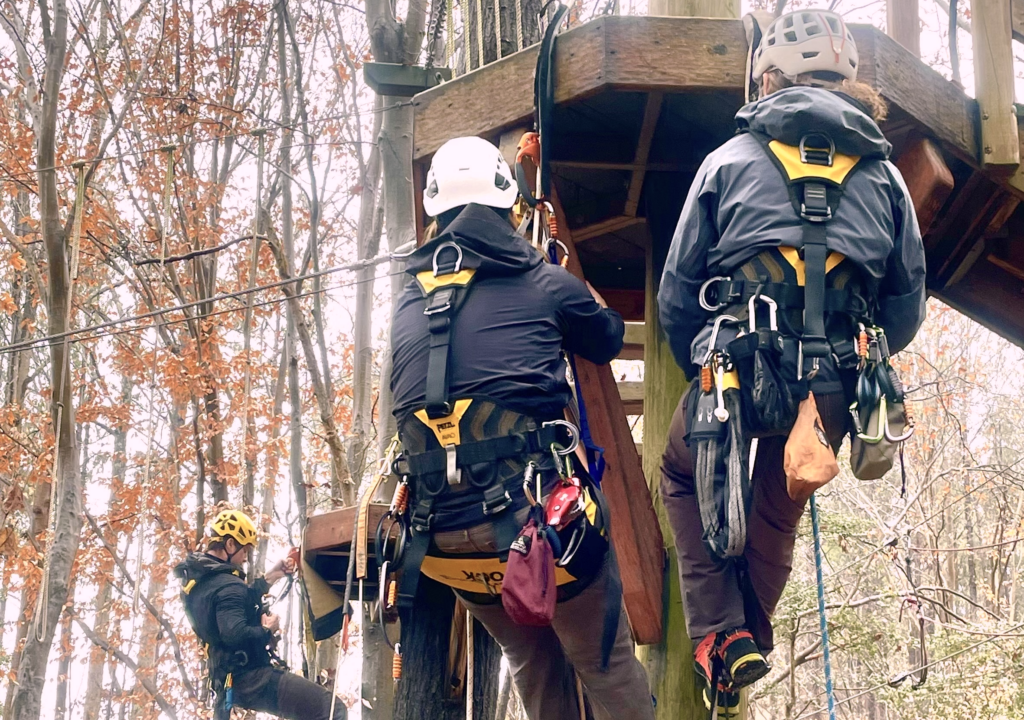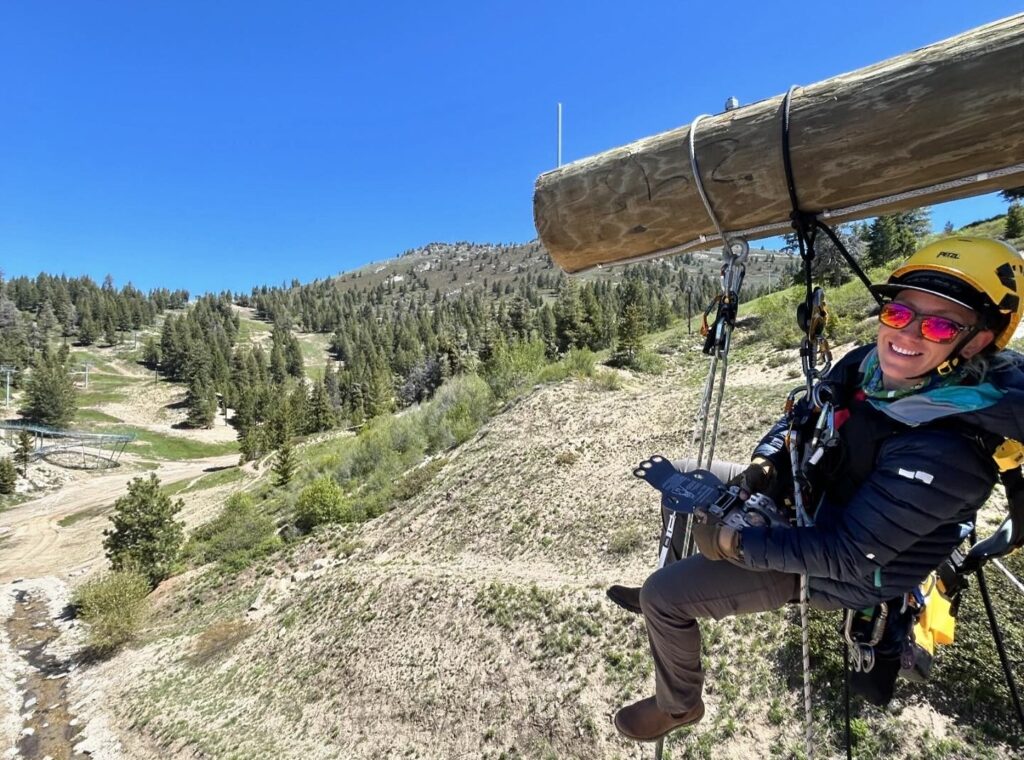Expand Your Inspection and Maintenance Capabilities
Belay cables in aerial adventure facilities like zip lines, challenge courses, and aerial parks are designed for guests and activity paths, limiting access for those who need to inspect and maintain the structures. With rope access skills, professionals can safely reach areas far beyond fixed cables, enabling a more comprehensive approach to inspections and maintenance. Let’s explore how rope access training empowers facility managers and course technicians to go beyond the boundaries of belay cables and keep facilities safe and well-maintained.
Why Are Rope Access Skills Essential for Aerial Adventure Parks?
While belay cables are designed for guest use and specific activity paths, inspections and maintenance often require reaching anchor points, structural components, and other elements outside these designated areas. Rope access skills and techniques bridge this gap, enabling you to navigate freely around, above, and beyond the areas supported by belay cables. This access is invaluable for conducting thorough inspections, addressing minor issues before they escalate, and performing proactive maintenance on otherwise inaccessible parts of a course.

Who Benefits from Training in Advanced Rope Access Techniques?
Rope access skills benefit a wide range of professionals responsible for facility safety:
- Course, Program, and Site Managers: Gain the ability to proactively assess and resolve potential issues in inaccessible areas.
- ACCT Inspectors: Equip themselves to thoroughly evaluate the structural integrity of high elements, supports, and critical connections.
- In-/house Inspector & Maintenance Techs: Extend their reach for proactive repairs, inspections, and preventive maintenance, addressing concerns early.
By adding these skills, each role gains the ability to access hard-to-reach areas, strengthening the overall inspection and maintenance process.
Key Skills Covered in Rope Access Training
Rope access training, based on SPRAT (Society of Professional Rope Access Technicians) and IRATA (Industrial Rope Access Trade Association) standards, prepares professionals for the unique demands of challenge courses and aerial parks. Here are some core skills that facilitate maintenance beyond the cables:
- Advanced Rope Maneuvers: Mastering techniques like rope-to-rope transfers, edge negotiation, and both ascending and descending allows technicians to access and service challenging areas outside the typical belay routes. These maneuvers enhance flexibility in navigating structural elements, enabling comprehensive inspections and repairs, even in complex locations.
- Rigging Techniques Beyond Belay Cables: Developing skills in custom rigging—such as anchor building, sling craft, and managing re-belays—empowers maintenance staff to create secure access routes beyond guest-designated paths. This approach allows teams to target specific maintenance and inspection needs without relying solely on existing belay cables, providing a more adaptable system for working on unique facility components.
- Rescue Skills for Hard-to-Reach Areas: Emergencies can occur in unconventional settings, and training in rescue methods like pre-rigged and solo-rescue techniques equips technicians to respond effectively, regardless of whether belay support is available. These skills are critical for ensuring the safety of both staff and guests in any scenario.
- Equipment Use and Inspection: Proper inspection and handling of rope access gear—such as carabiners, anchors, slings, and ropes—are vital when working outside standard cable routes. Training in specialized equipment use ensures that all tools are correctly maintained, safe, and suited to the unique demands of non-traditional access

Enhancing Facility Safety and Longevity
With rope access training, maintenance professionals can prevent structural issues, reduce downtime, and extend the life of facility components by inspecting areas that guests and staff using traditional cables cannot reach. Rope access allows teams to maintain a proactive approach to facility care, mitigating risks and ensuring that every part of the course is safe for use.
In sum, rope access training offers invaluable skills that allow aerial adventure professionals to venture beyond the limitations of belay cables. By unlocking this expanded reach, technicians and inspectors can maintain a higher standard of safety, reducing hazards and mitigating risk. For anyone in the industry looking to deepen their technical capabilities, rope access training is a vital step in maximizing facility safety, access, and longevity.
